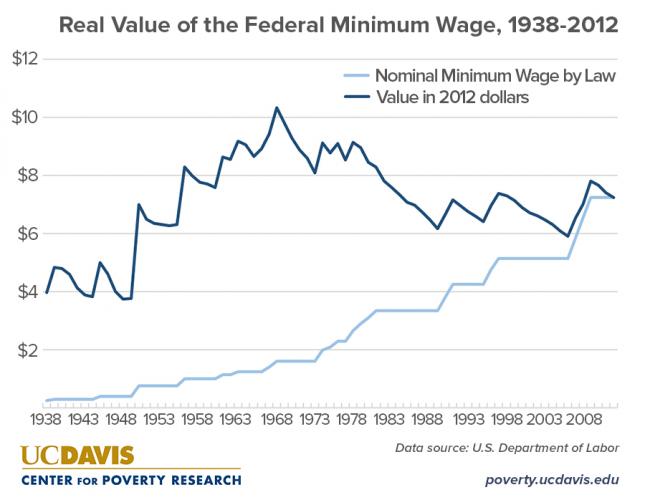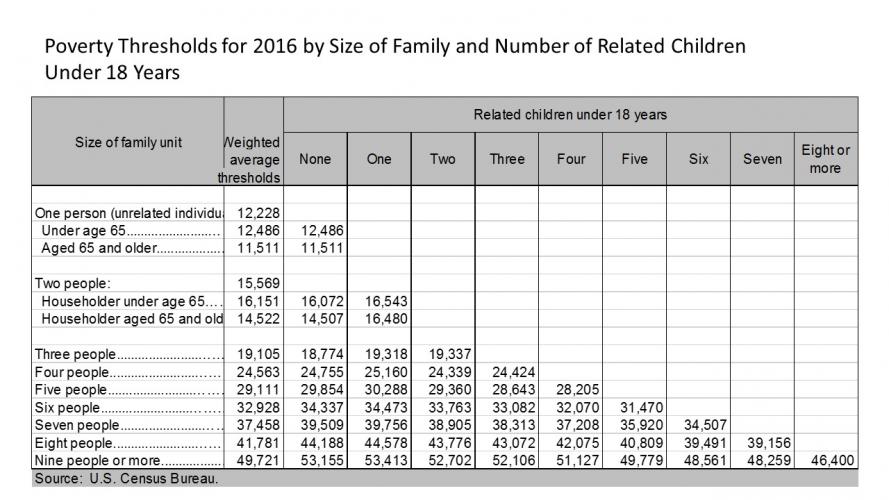What are the annual earnings for a full-time minimum wage worker?
Minimum wage basic calculations and its impact on poverty
Since it was first instituted in 1938, the federal minimum wage has established a floor for wages. While not every worker is eligible, it provides a minimum of earnings for the lowest-paid workers.
What are full-time annual earnings at the current minimum wage
The annual earnings for a full-time minimum-wage worker is $15,080 at the current federal minimum wage of $7.25. Full-time work means working 2,080 hours each year, which is 40 hours each week. However, many states have their own minimum wages, including 29 that are currently higher than the federal rate.
Minimum wages from state to state vary widely, from those with minimums that default to the federal rate to states with minimums that are higher. Washington and Massachusetts have the highest current state minimum wage at $11 per hour.
Some states with minimums higher than the federal wage—such as New Jersey, Arizona and Washington—have also chosen to adjust their minimum wage annually for inflation. Some municipalities, including Washington D.C., currently have a minimum wage for some employees that is even higher than minimums in any state.
How much is the federal minimum wage really worth?
Despite these recent increases in state minimum wages, minimum wages at the federal and most state levels are still below the peak of its real value in 1968. Adjusting the real value for inflation based on 2017 dollars, the 1968 minimum wage of $1.60 was worth $11.39 in 2017 dollars. Since then, the minimum wage’s real value has largely been in decline.
Will a minimum wage job keep workers out of poverty?
Whether full-time work at minimum wage keeps a worker out of poverty depends on their family size and whether others in the household work. Someone who works full time for minimum wage and lives alone will earn above their poverty threshold. For single parents who work minimum wage, however, staying above poverty can be particularly challenging, even with full-time work.
Poverty is determined by the U.S. Census Bureau’s poverty thresholds. These thresholds, updated annually, determine how much income a household requires to meet basic needs, such as food and shelter. In 2016 in a household of two adults, a single full-time worker at minimum wage will earn only 94 percent of their poverty threshold of $16,070. A single parent with one child will earn 91 percent of their poverty threshold.
This means that in order to have earnings above their poverty threshold, a single parent with one child, for example, would have to earn at least $7.95 per hour working full-time. At the current federal minimum wage of $7.25, this single parent would have to work at least 2,282 hours during the year, or an average of about 43.8 hours each week.
The larger the family, the more hours of work are required to stay above poverty with a single minimum-wage income. A single parent working at the current minimum wage with two children would have to work at least 2,668 hours annually—more than 50 hours each week—to keep the household above poverty.
Do workers at the minimum wage still need government assistance?
With a minimum wage income, even working full time, many workers will qualify for most federal safety net programs in the United States. Eligibility guidelines for government assistance are based on the Census Bureau thresholds, but are developed and updated annually by the U.S. Department of Health and Human Services. Those with incomes below a certain percentage of their poverty guideline will qualify.
Federal assistance programs all have eligibility requirements that are in part based on the proportion of household income to the federal poverty guideline. For example, the SNAP nutritional assistance program is available to those with a gross household income of up to about 130 percent of their federal poverty guideline.
For a family of three, this means an annual income of $26,556 or less will qualify them for SNAP benefits. A full-time worker supporting this household alone will have to earn $12.78hourly working 40 hours each week—or about 70 hours each week at the current $7.25 minimum wage—before the household loses eligibility for benefits.
Updated 1/12/18
For more information:
U.S. Census Bureau. 2017. “Poverty Thresholds.”
U.S. Department of Agriculture. 2018. “Supplemental Nutrition Assistance Program (SNAP): Eligibility.”
U.S. Department of Health and Human Services. 2018. “Poverty Guidelines.”
U.S. Department of Labor. 2017 “Minimum Wage Laws in the United States – January 1, 2018.”











